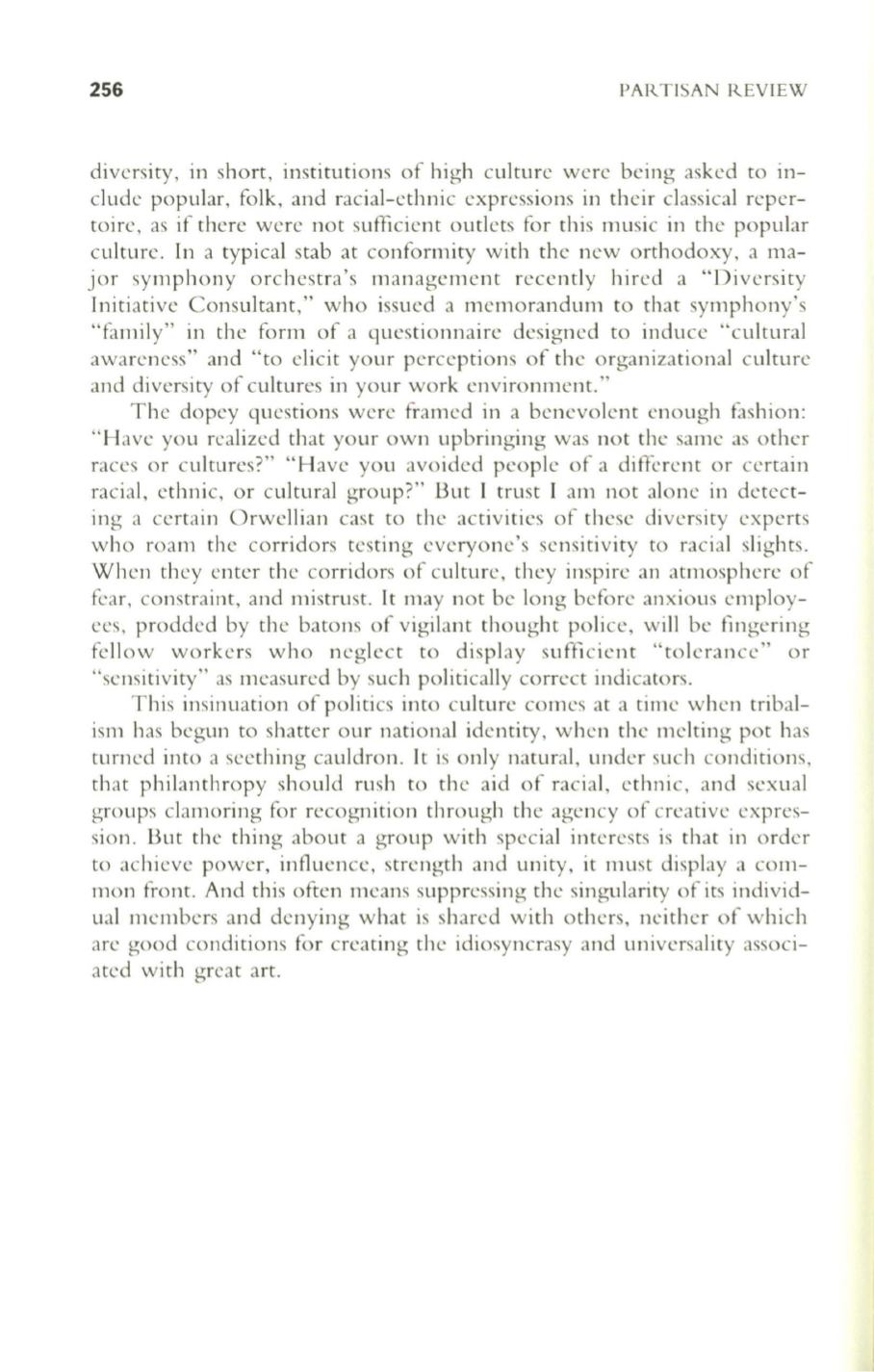
256
PARTISAN REVIEW
diversity, in short, institutions of high culture were being asked
to
in–
clude popular, folk, and racial-ethnic expressions in their classical reper–
toire, as if there were not sufficient outlets for this music in the popular
culture. In a typical stab at conformity with the new orthodoxy, a ma–
jor symphony orchestra's management recently hired a "Diversity
Initiative Consultant," who issued a memorandum to that symphony's
"family" in the form of a questionnaire designed to induce "cultural
awareness" and "to elicit your perceptions of the organizational culture
and diversity of cultures in your work environment."
The dopey questions were framed in a benevolent enough fashion:
"Have you realized that your own upbringing was not the same as other
races or cultures?" "Have you avoided people of a different or certain
racial, ethnic, or cultural group?" l:3ut I trust I am not alone in detect–
ing a certain Orwellian cast to the activities of these diversity experts
who roam the corridors testing everyone's sensitivity to racial slights.
When they enter the corridors of culture, they inspire an atmosphere of
fear, constraint, and mistrust. It may not be long before anxious employ–
ees, prodded by the batons of vigilant thought police, will be fingering
fellow workers who neglect to disp lay sufficient "tolerance" or
"sensitivity" as measured by such politically correct indicators.
This insinuation of politics into culture comes at a time when tribal–
ism has begun to shatter our national identity, when the melting pot has
turned into a seething cauldron. It is only natural, under such conditions,
that philanthropy should rush to the aid of racial, ethnic, and sexual
groups clamoring for recognition through the agency of creative expres–
sion. But the thing about a group with special interests is that in order
to achieve power, influence, strength and unity, it must display a com–
mon front. And this often means suppressing the singularity of its individ–
ual members and denying what is shared with others, neither of whi ch
are good conditions for creating the idiosyncrasy and universality associ–
ated with great art.


